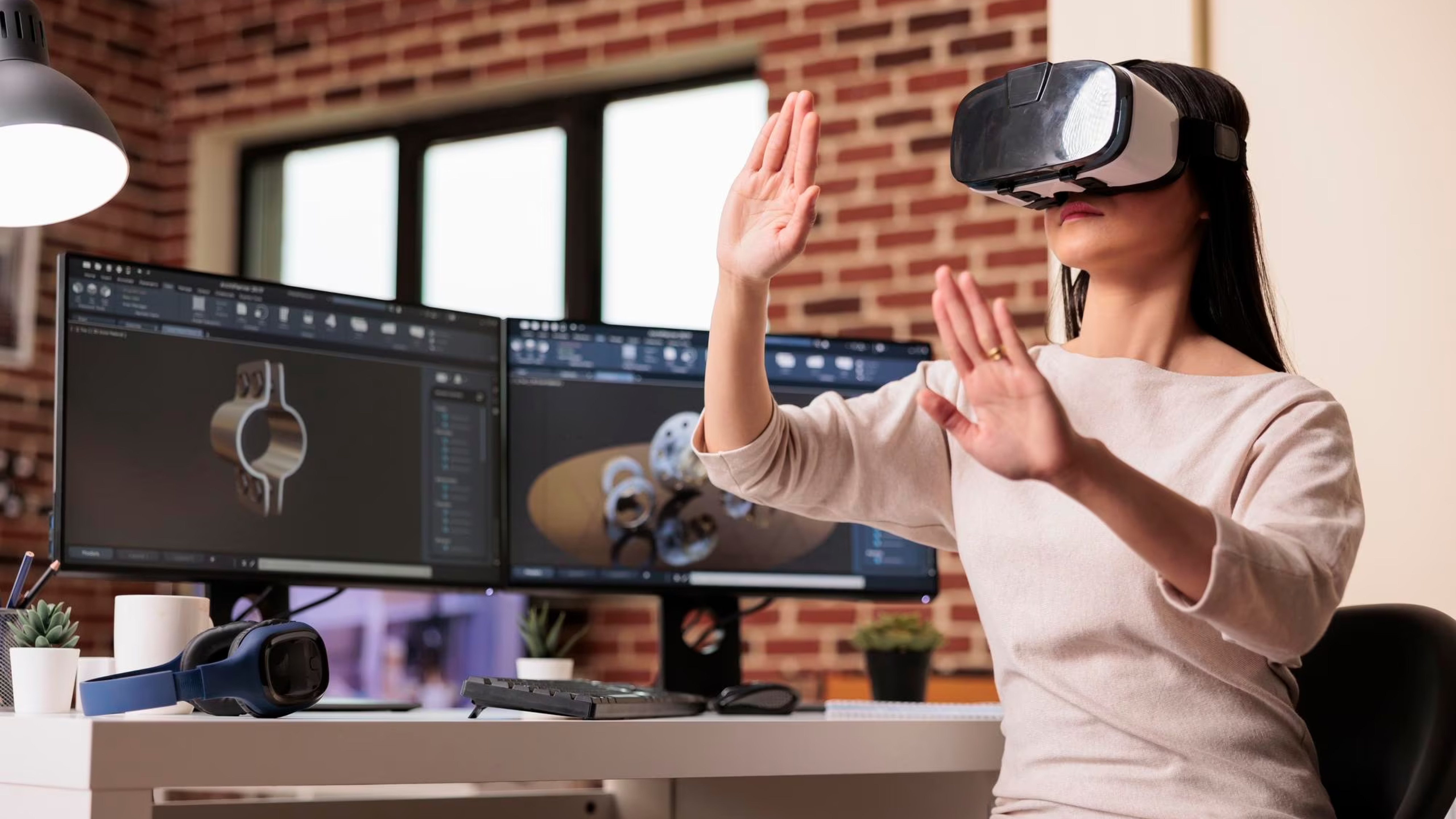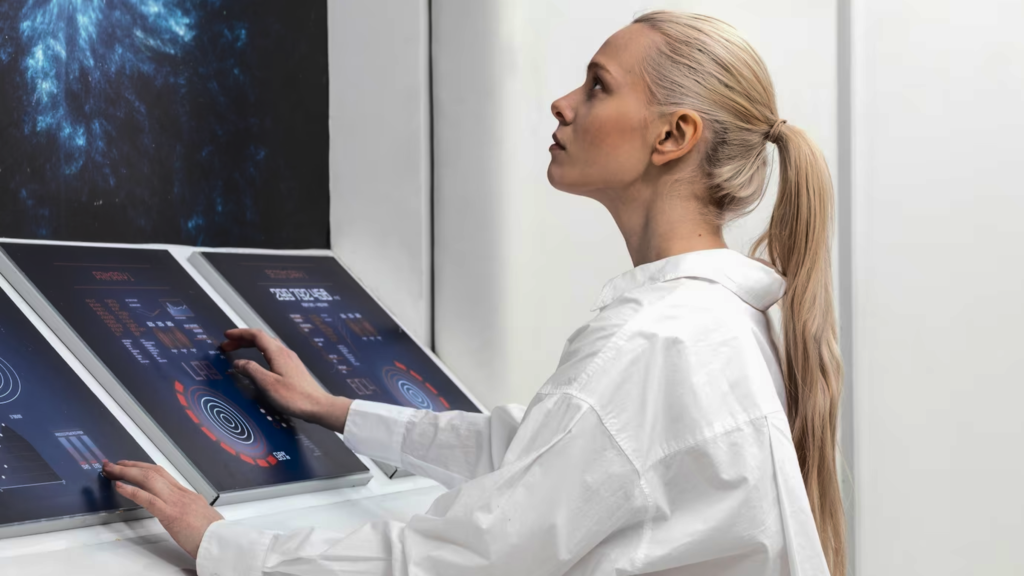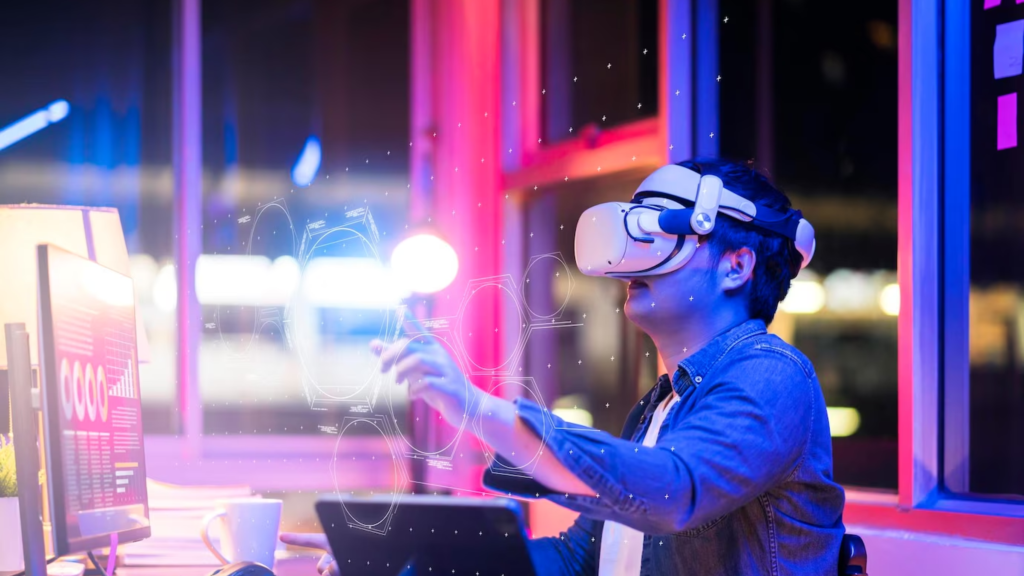
How Augmented Human Intelligence Can Enhance Our Lives With Machines
The advancement of technology has simplified our lives. It has also significantly increased our reliance on electronic devices. MIT Media Lab works to enhance how people engage with technology.
Pattie Maes, MIT Media Lab professor, AI scientist, and pioneer in human-computer interfaces stated that the digital technologies we take for granted today may not always work to our advantage in the opening remark of her keynote.
Maes declared, “Study after study demonstrates that using electronics reduces our capacity for memory, reasoning, creativity, social interaction, and many other abilities.” There is also the issue of privacy. AI-driven systems rely on gathering a lot of private information that, in the wrong hands, may be exploited against us.
Should we continue seeking more advanced technology using Augmented Human Intelligence?
Facilitating The Interaction Between Humans And Computers

There is hope despite the grim outlook. Maes has been looking for ways that technology could support decision-making, communication, and memory enhancement since her career in the AI sector began. ” I was always far more interested in helping people”, she said in the Hidden Heroes series narrative.
The last few decades of her and her team’s work on human-computer interaction systems at the MIT Media Lab were guided by this mentality. In her remarks, she stated, “We attempt to imagine the future possibility when technologies like Augmented Human Intelligence could help people.”
We can assist humans in being more imaginative, paying attention, improving memory and motivation, communicating effectively and empathetically, and generally improving our well-being by using sensor data in gadgets like smartwatches and other wearables, as well as AI techniques.
Even though they resemble sci-fi movie props from the future, the devices her team has created have already been shown to assist many people in natural ways.
1. Memory 2.0
By linking our factual and spatial memories, the NeverMind system was created by an MIT research team to aid with memory. The group developed Augmented Human Intelligence with reality glasses that link facts with well-known locations and encode information.
While wearing the glasses, the user would take a virtual promenade where specific facts to remember were suggested, along with visual cues from an alternate reality.
The study team requested participants to memorise the Super Bowl champions year by year as part of an experiment. They would come across items related to the football team members as they walked from the train stop to their office. This straightforward association-based technique worked well for enhancing memory.
2. My Fictitious AI Instructor
Even though deepfakes have received a lot of negative news lately, they can occasionally be helpful. To increase students’ willingness to learn, “we decided to apply synthetic AI and construct teachers who a kid looks up to,” Maes said during the presentation.
In the experiment, a deepfake of Elon Musk and another fictional character were set up to instruct a class on vaccinations. We informed individuals that these were deepfakes and that they would deliver a similar lesson, according to Maes. Even the voice was the same. The findings revealed that admirers of Musk performed better and had a greater desire to learn.
By assisting children who lack access to qualified teachers, this discovery could significantly impact education. Maes says, “We can develop teachers that students look up to, thereby assisting them with motivation and attitude toward learning.”
3. Criticism Of Artificial Intelligence
We have two different ways of thinking, according to Nobel Prize winner and author of the “Thinking, Fast and Slow” theory, Daniel Kahneman
- System one is quick, automatic, and unconscious but biased and prone to mistakes.
- System two is sluggish, requires work and is more deliberate and mindful.
Pattie Maes and her colleagues developed this hypothesis to enable individuals to make more deliberate judgements, particularly in an era of information overload and fake news. They created AR glasses that, when activated, record what you hear and provide real-time guidance on whether and why information may be accurate or inaccurate. The tool determines whether a claim is supported by sufficient evidence and looks for other reliability characteristics.
According to the study, those who used the set would improve their critical thinking abilities and be more likely to confront claims rather than accept them without questioning them.
4. Preventing Lack Of Concentration
Our attention spans have been significantly impacted by information overload. 50% of people report having shorter attention spans as a result of the current information environment, according to a recent survey of the UK population conducted by the Policy Institute and Center for Attention Studies at King’s College London.
We tend to quickly lose interest in what we’re viewing or reading because the media we consume is typically designed for shorter formats — like Twitter with its character limit or Instagram with its 15-second limit per story.
Nataliya Kosmyna, a postdoctoral researcher under Maes, created AR glasses with integrated EEG (electroencephalography) sensors to analyse wearers’ brain waves and EOG (electrooculogram) sensors to track their eye movements. When the wearer’s attention wanders, the glasses give immediate feedback based on sensor data.
In tests of the subject being delivered, people who used this device during lectures and received the biofeedback when their focus wandered performed better than those who received random or no warnings to pay attention.
There may be issues with using such smart AR glasses in specific settings. We wouldn’t want our supervisor monitoring our attention and prodding us each time we start to nod off. But consider the device assisting drivers and prompting them to stop when they feel fatigued; does that sound like a good use case?
5. Increase In Creativity
Another Pattie Maes student, Joanne Leong, created a system that transforms users into younger versions of themselves using Snapchat filters. She also devised an experiment where participants would complete creative tasks while viewing three different versions of themselves: their true selves, younger selves, and inventor selves—according to the study, imagining oneself as a youngster or inventor indeed improves one’s creative talents.
6. A Quick Fix For A Problem
Adam Horowitz, a different student, created an experiment modelled after a technique used by scientists, creators, and painters in the past. This technique involved taking a nap while holding a large object and forcing oneself to concentrate on their issue as one was dozing off. As soon as they slept off, the hand would relax and let go of the ball, rousing them. A solution—a eureka moment (Augmented Human Intelligence)—would strike during that brief dream.
Horowitz experimented with the technique, but instead of holding a ball, a person would have a sensor on the hand (or a straightforward app on their phone) that would sense when they start to nod off and wake them up in the middle of the dream to foster creativity.
7. Voice For Those With Speech Impairment
Maes’ team has also assisted those who have lost their ability to talk. Their vocal cords create no or minimal sound, yet they can still move their face. The group created a technology called Alter Ego that can detect minute muscle signals on the chin, neck, and face when a person is attempting to whisper to a device. They can then categorise the calls using AI techniques and decipher what the speaker says.
8. Compassionate Communication
In addition to helping those with speech impairments, Maes’ team has been improving everyone’s ability to express themselves more forcefully.
A device created by Camilo Rojas, who collaborates closely with Pattie Maes on “the new generation of empathetic technology,” uses machine learning to detect emotional content in conversational cues like tone of voice, word choice, facial expressions, electrodermal activity, heart rate, etc. and feeds it back to speakers in real-time.
According to significant findings from the experiment, “by amplifying these social cues, people end up conversing in a much more empathic way,” Maes noted. It shows that they would inquire more frequently and pay closer attention to the other person.
9. Using Meditation To Gain The Superpower
Our culture experiences a lot of stress due to the fast-paced and overstimulated reality. Many methods are available to help one find more peace in their life, but the MIT team’s invention elevates mindfulness practice to a new level.
The virtual reality system uses EEG sensors to monitor brain activity. In the virtual environment offered, we can use “superpowers” like levitation or telekinesis after we have relaxed. We lose our superpowers every time we lose focus. The brainwave sensors teach us how to control our stress levels and maintain attention while continuously monitoring our stress levels.
Achieving The Ideal Balance In Human-Computer Interaction

Although digital technologies have the potential to improve Augmented Human Intelligence, we must always be aware of potential drawbacks. We must keep in mind that, in addition to shaping the new technology, we and our lives are also shaped by them. For digital gadgets to best serve us, Pattie Maes and her colleagues at the MIT Media Lab are dedicated to continuously improving our interaction with them.
This woman’s closing statement, “We want to give individuals better tools to alter themselves rather than force anyone to utilise them,” should serve as the North Star for all scientists and engineers creating contemporary technology.
Manish Surapaneni
A Visionary & Expert in enhancing customer experience design, build solutions, modernize applications and leverage technology with Data Analytics to create real value.
Other articles

Manish Surapaneni
Stop Outsourcing Your Ethics, Tech Leaders
Setting up their own ethics committee is a step forward for tech companies, as they are the clear winners of

Manish Surapaneni
How To Beat The Tech Talent Squeeze In 2023: 6 Proven Strategies
In the current economic climate, with rising costs and increased job turnover, one of the biggest mistakes a company can

Manish Surapaneni
How Augmented Human Intelligence Can Enhance Our Lives With Machines
The advancement of technology has simplified our lives. It has also significantly increased our reliance on electronic devices. MIT Media